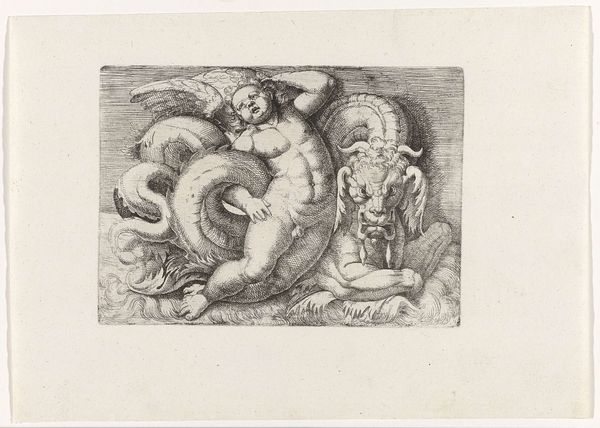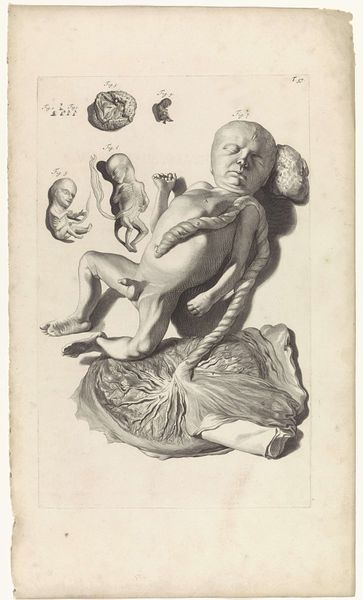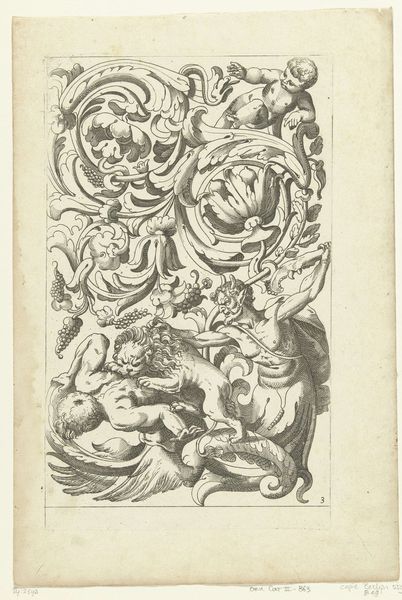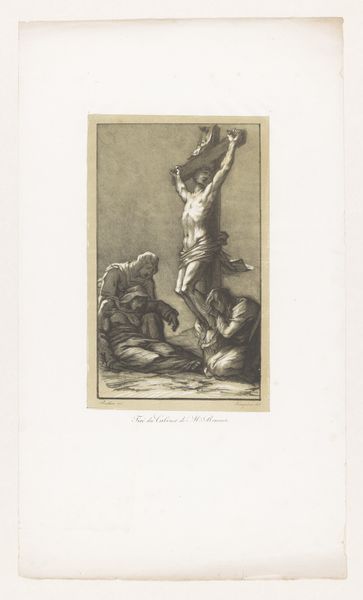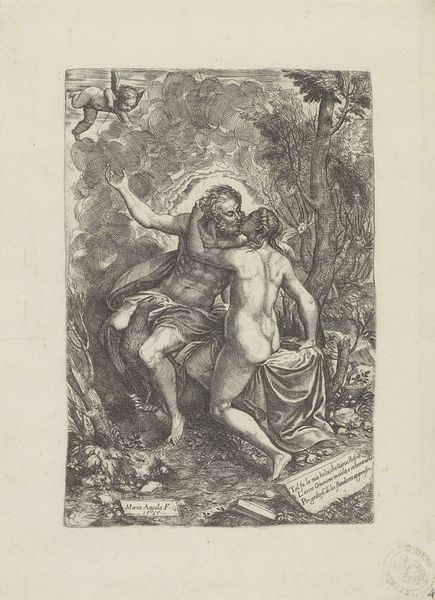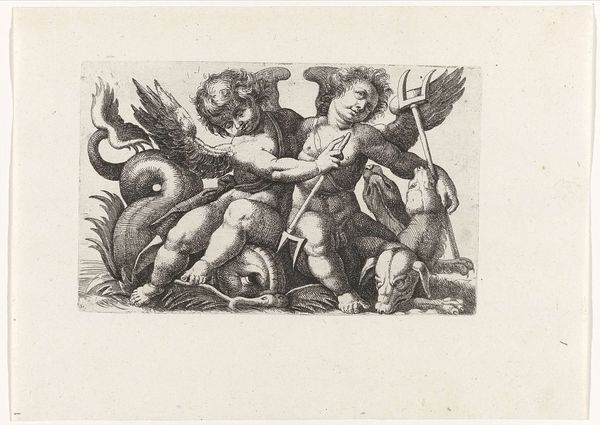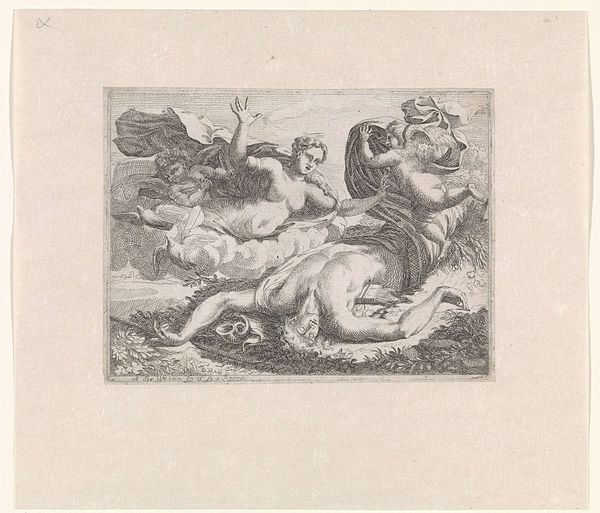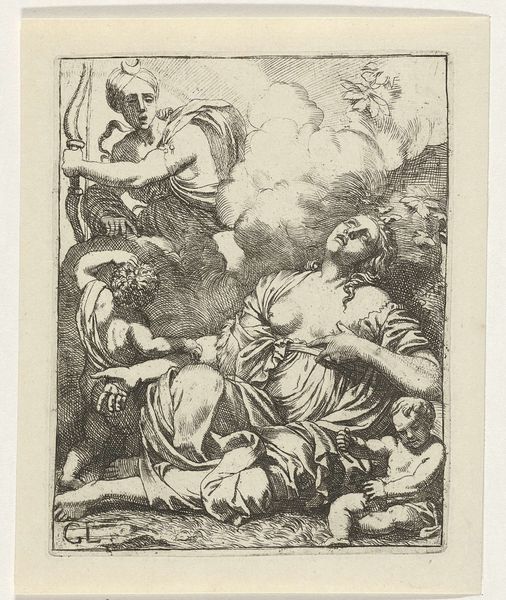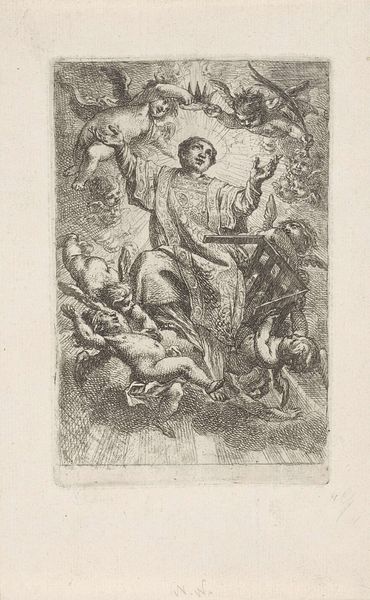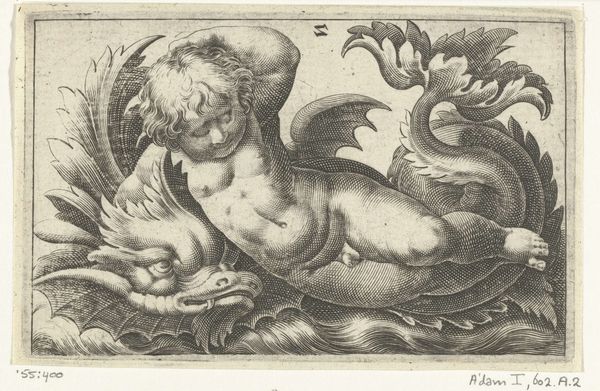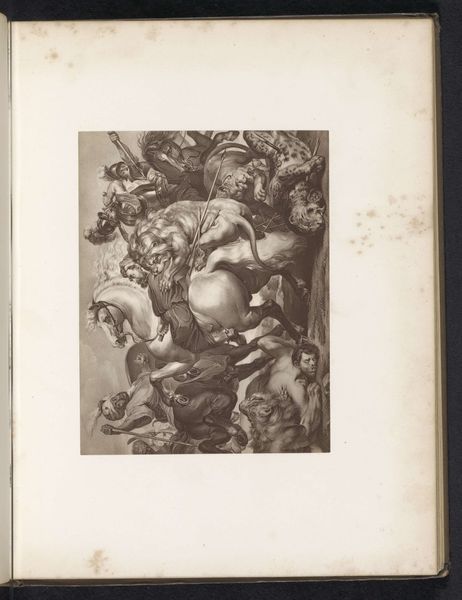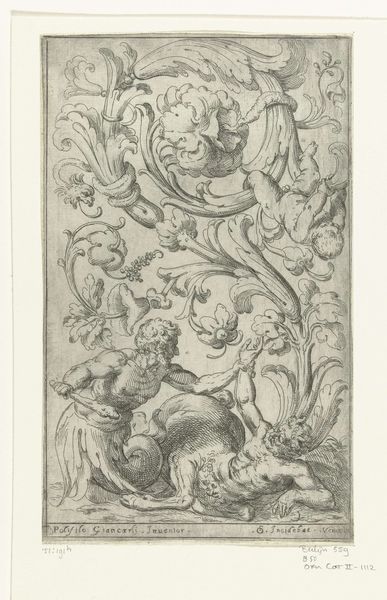
engraving
#
baroque
#
figuration
#
mythology
#
history-painting
#
engraving
Dimensions: height 139 mm, width 90 mm
Copyright: Rijks Museum: Open Domain
Editor: Here we have Giovanni Andrea Maglioli's "Triton blowing a shell", created sometime between 1580 and 1610. It’s an engraving currently housed at the Rijksmuseum. I'm struck by how dynamic it feels despite being a relatively small black and white print. What do you see in this piece? Curator: It's intriguing how Maglioli captures Triton, son of Poseidon, not just as a mythological figure, but as an embodiment of primal energy. The shell he blows isn’t merely a trumpet; it’s a symbol, wouldn’t you agree? What kind of symbol? Editor: Maybe a symbol of calling forth…the sea’s power? Curator: Exactly! It evokes the primordial sounds of the ocean, a cultural memory of nature's untamed force. The engraving style itself – the dense, swirling lines – reinforces that sense of powerful, uncontrolled energy, right? How might this figure relate to broader themes of transformation and the human-animal connection, themes prevalent in the baroque? Editor: It almost feels like a merging of humanity and the raw power of the natural world. Like he’s not just blowing the shell, but becoming one *with* the sound. Curator: Precisely! Consider, too, the historical context – this piece emerged during a time of intense exploration and encounters with the "New World." How might that have shaped the artist’s visualization of this mythological figure? Editor: Maybe it’s a way of grappling with the unknown, assigning a face to the immensity and power of the oceans being crossed. Curator: A beautiful way to phrase it! It reminds us that images are not static. They're cultural containers, always ready to be filled and reinterpreted by new contexts. Editor: I hadn’t considered how much history can be embedded within what seems like just a mythological figure. Thanks!
Comments
No comments
Be the first to comment and join the conversation on the ultimate creative platform.
